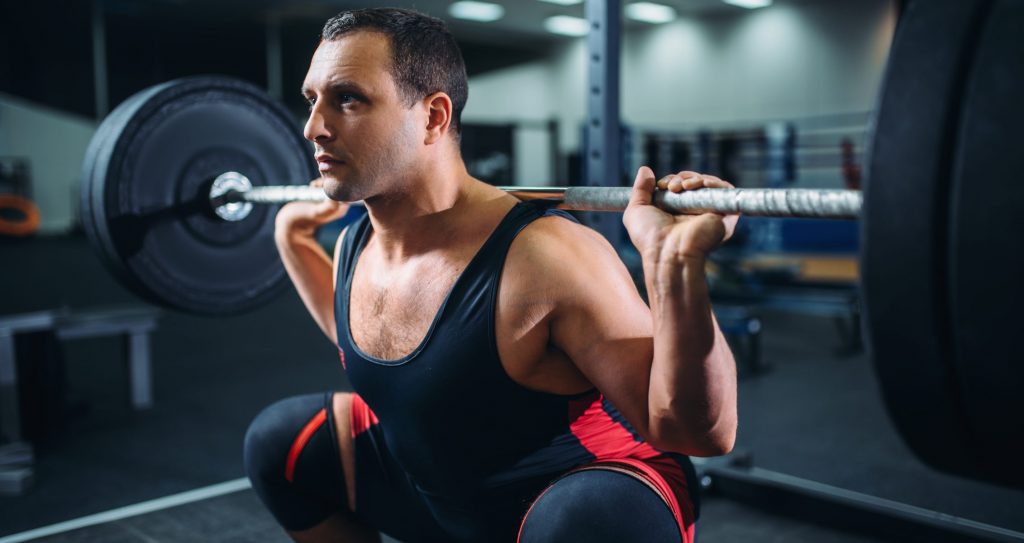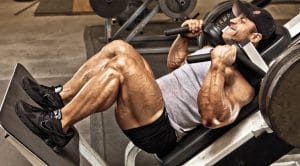Ass to grass squats engages your lower body muscles to their full extent.
The ass-to-grass squat, or ATG, involves squatting deep enough for your hips to go below parallel. (You can get the same range of motion on the hack squat machine as a safer alternative.) This exercise gained popularity among Olympic lifters who incorporated it into their routines from snatch and clean and jerk movements. Additionally, many CrossFit trainers and football coaches advocate for ATG squats, often emphasizing the importance of going deep.
While there is a debate on how deep to go with your squats, all experts and scientists agree that squats are important for training your lower body (1). How deep you go with your squats can depend on height, torso length, joint health, and hip mobility. In this guide, we discuss ATG squats and how to do them effectively and share alternatives for those who cannot safely squat this low.
ATG Squat Overview
When you watch a child bend to pick up a toy or something else, they use a deep squat. Sadly, after years of sitting behind a desk, we lose this ability, leading to shorter hip flexors, more knee and back stress, and weaker glutes.
Doing ATG squats could mean descending so low that your hamstrings touch your calves. The compound exercise involves using your hip, knee, and ankle joints. You can do ATG squats with dumbbells, barbells, kettlebells, or your bodyweight.
Below, we dive into the benefits of ATG squats and the proper way to do them. Read further, and you’ll find useful training tips for unlocking your full range of motion. We also share alternatives that build the same muscles.
ATG Squat Techniques and Muscles Worked
ATG squats build the muscles in your lower body — quads, hamstrings, and glutes. This study shows that when done with proper form, deep squats like the ATG are effective for training and strengthening your leg muscles (2).
How to do the ATG Squat:
- Stand with your feet at hip distance apart and toes pointing straight or outward at a slight angle.
- Place the barbell across your back, ensuring it rests on your upper traps, not your neck. Hold the barbell with a shoulder-width grip. This is your starting position.
- Push your hips back while bringing your chest forward to engage your hamstrings and glutes.
- Bend your knees forward and descend as far as possible while pushing your hips back. Your chest and torso should stay as upright as possible, and your shoulders back.
- Drive your feet into the ground and extend your legs to stand up, and return to starting position for a complete rep.
Training Tips
The ATG squat requires a correct form to prevent injury and proper muscle activation when squatting to such depths. It can be extremely hard for a beginner, especially if you load too much on the weights. Here are some training tips that you can use to get the best out of this exercise.
Use a Wider Stance
When doing an ATG squat, some people find that their back ends up rounding or their knee tilts. Using a wider stance can help you avoid this. You may also need to lower your weight.
Avoid Rounding Your Back
Rounding your back when doing this routine is dangerous. It takes the load from your targeted muscles and places it on your discs and spine. If your back keeps rounding, try doing them without weights first.
Stretch Prior
The increased range of motion you use for the ATG squat can make it so hard if your muscles are tight. So stretching prior can help to loosen up your muscles.
Use Lower Weights
You most likely won’t be able to use the same weights you use for your squat barbell for the ATG squat. This exercise is much harder and requires a greater range of motion.
Benefits of ATG Squats
ATG squats are a great exercise to add to your routine to see all-around development. Below are some other benefits of this exercise.
Quad Builders
ATG squats are wonderful quad builders. The range of motion helps to increase the muscle mass and strength in your quad muscles.
Improve Lower Body Mobility
The extended range of motion you use for the ATG can help improve your lower body mobility. This is because it stretches almost all of your significant lower body muscles.
Build Core Strength
ATG squats require using your core to stabilize your body, especially at deep depths. As a result, doing this exercise improves your balance and stability over time.
Better Knee Stability
ATG squats can also help you get better at knee movements which you use for other squats. This will carry over to other lower body exercises, such as lateral lunge.
Leg Hypertrophy
As a result of the deep squatting, your lower body muscles get more time under tension when doing ATG squats, leading to intense muscle activation and better muscle growth.
ATG Squat Alternatives
ATG squats are a great lower body builder, but not everyone can do them. It’s also important to vary your exercise routine to add additional stimulus and avoid the training monotony that leads to a plateau (3). Here are some variations you can use.
Sissy Squat
The sissy squat is also a deep movement that combines your hamstrings and calves, like ATG squats. However, with the sissy squat, you can use your arms for balance. With this exercise, you also lean back, which removes the need for flexibility and hip mobility.
Heels Elevated Goblet Squat
Heels-elevated goblet squats are great for those with ankle mobility issues. Elevating your heels helps eliminate the problems a stiff ankle causes during ATG squats.
Hack Squats
Hack squats are a great way to squat with back support. While the hack squat is considered less functional, the hack squat can hit the same range of motion, which is great for your lower body muscles.
Forward Lunges
Lunges are a great bodyweight unilateral alternative. When doing lunges, you can use shorter steps to increase the range of motion at your knee to better activate your quads.
FAQs
Does ATG actually work?
ATG or ass-to-grass squats are great for training and strengthening your lower body. The above guide includes a study showing that deep squats are scientifically proven great for your lower body muscles.
Is ATG good for building muscle?
The range of motion you use for ATG squats makes it great for your quads. It also increases time under tension which leads to greater muscle activation.
What is the full form of ATG squat?
In full form, your ATG squat should end with your hamstrings touching your calves (or close to it). However, doing this squat for as low as your range of motion allows you to go is generally advisable.
More Exercise Guides
The ATG squat is a great variation to try out and is a good quad builder. Below are the exercise guides of other routines that you can use to train your body muscles effectively.
- Seated Good Mornings Exercise Guide: How to, Tips, Benefits, and Alternatives
- Plank Pull Through: How to, Benefits, and Exercise Guide
Follow us on Instagram, Facebook, and Twitter for more exercise guides!
References
- Gullett, J. C., Tillman, M. D., Gutierrez, G. M., & Chow, J. W. (2009). A biomechanical comparison of back and front squats in healthy trained individuals. Journal of strength and conditioning research, 23(1), 284–292. https://doi.org/10.1519/JSC.0b013e31818546bb
- Hartmann, H., Wirth, K., & Klusemann, M. (2013). Analysis of the load on the knee joint and vertebral column with changes in squatting depth and weight load. Sports medicine (Auckland, N.Z.), 43(10), 993–1008. https://doi.org/10.1007/s40279-013-0073-6
- Krzysztofik, M., Wilk, M., Wojdała, G., & Gołaś, A. (2019). Maximizing Muscle Hypertrophy: A Systematic Review of Advanced Resistance Training Techniques and Methods. International journal of environmental research and public health, 16(24), 4897. https://doi.org/10.3390/ijerph16244897









